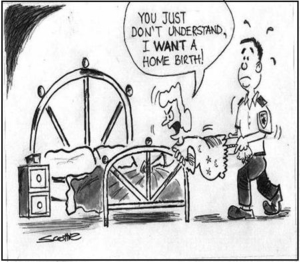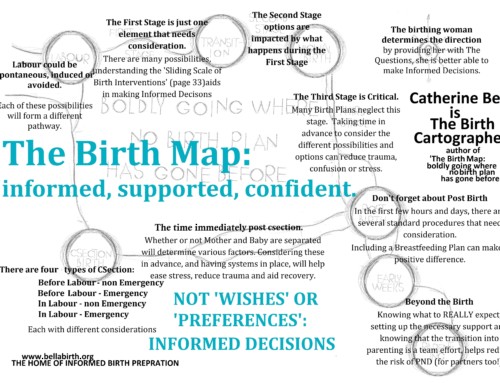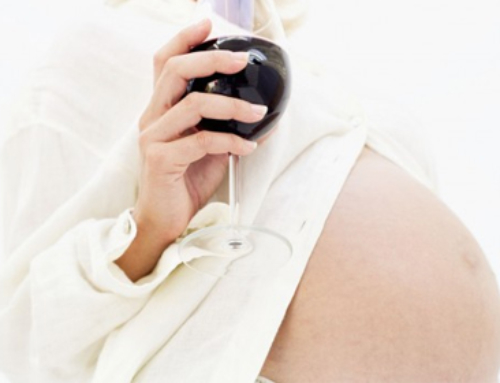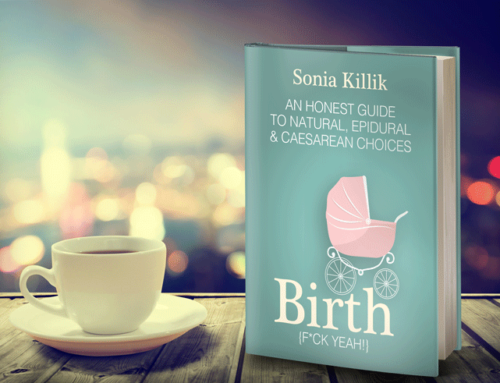 The US has a real problem with homebirth and I for one can’t really understand it at all. It seems that many doctors and hospitals absolutely refuse to believe that homebirths should be happening at all. That women should not have the choice to deliver their infant at home. Recently there have been a couple higher-profile studies that have been used to discuss the relative safety of homebirth, starting in 2010 with the infamous Wax et al. paper, which I deconstructed here. Then there were critics who tried to poke holes in a study out of the Netherlands that found homebirth to be safe for low-risk pregnancies, the criticisms of which I addressed here. And then there was another study that claimed to look at homebirth and the risks associated with it which I reviewed here.
The US has a real problem with homebirth and I for one can’t really understand it at all. It seems that many doctors and hospitals absolutely refuse to believe that homebirths should be happening at all. That women should not have the choice to deliver their infant at home. Recently there have been a couple higher-profile studies that have been used to discuss the relative safety of homebirth, starting in 2010 with the infamous Wax et al. paper, which I deconstructed here. Then there were critics who tried to poke holes in a study out of the Netherlands that found homebirth to be safe for low-risk pregnancies, the criticisms of which I addressed here. And then there was another study that claimed to look at homebirth and the risks associated with it which I reviewed here.
And now we have another All over the news a few weeks ago (I’ve been busy) was news that homebirths increased the risk of an Apgar score of 0 10-fold. Doctors were out in force saying this is why homebirth should not be allowed (really via not allowing midwives to practice homebirth) or ethically promoted. But what does the research really tell us? First, before even looking at the data itself, I want to talk about one of the critical distinctions that is often overlooked in this debate (which is predominantly US-based). This research is one of the few to only include USA data, and this is hugely important because the USA has a system very different from other countries. Doctors in Canada, the UK, the Netherlands, Australia, or NZ cannot use this data to inform on anything in their own countries. Why? Because these other countries have integrated systems, and this is key to women’s well-being during labour and delivery. Take Canada, for example, where many provinces have systems in place with midwives who deliver at home. You can plan a homebirth and, based on your health and how the pregnancy progresses, safely deliver at home so long as you remain low-risk. If a red flag pops up, your midwives will talk to you about the hospital option where she actually has hospital privileges (though it still remains your choice, your midwife may not take your case). Notably, though, the midwives who deliver at home also have hospital privileges, so you can transfer and take your midwife with you even if you’re half way through your labour. And if a transfer is necessary, you’ve actually already been set up in the system for the hospital just in case so there are no questions, confusion, or problems if you have to do a mid-labour transfer. Does the US have this? Some individual locations do, but most don’t. This means homebirth looks very different. In some places, it is illegal for midwives to practice or to attend a homebirth which means if something goes wrong, the family runs the risk of continuing the labour at home with the midwife, or transferring to a hospital and risking charges of negligence or worse for them or their midwife. In some places the risk of charges are not there, but there’s no continuity of care when a woman transfers, meaning her midwife is left at the door and she’s at the whim of whoever is on call when she transfers. Some hospitals won’t pre-register women for homebirth transfers, making the situation even murkier. And what of people who live in remote areas which are not close to a hospital? They often birth at home regardless because there is no alternative and if something goes wrong? Well, good luck. Hopefully it’s clear that homebirth in the USA is quite distinct from homebirth elsewhere. And with that we have to look at what this new research found… The study examined all births in the United States between 2007 and 2010, removing preterm and low birth weight births. The researchers looked at the birth certificates for Apgar scores and neonatal seizure prevalence (in the states that provided that information) as well as birth location and attendant. They found a marked increase in Apgar scores of 0 (10.55:1) and neonatal seizures (3.8:1) in homebirths attended by a midwife and a moderate increase in midwife-attended birth center births (3.56:1 for Apgar scores and 1.88:1 for seizures). Notably, midwife-attended births in a hospital had a significantly lower rate of Apgar scores of 0 (0.55:1) and neonatal seizures (0.74:1) compared to physician-attended births in a hospital (half the rate). They performed the analyses births that were greater than or equal to 41 weeks gestation or less and maternal age < 35 or greater than and the results were the same. However, no other factors were analyzed as possible confounds. Here is where what I brought up before becomes important. First, there was no way to assess if these births were low risk or not. And in fact, this is important because few people would suggest that a high-risk birth take place at home, or without appropriate medical back-up. One reason to believe this might be a factor is that a report from Oregon on birth by planned setting in 2011[2]. The Oregon report said there were four term fetal deaths at birth for planned homebirth (the rate was not statistically different from that of planned hospital birth) and four term early neonatal deaths (which was statistically significantly higher than planned hospital births). However, they combined the two types of death in the report. Of these eight deaths, six were deemed to be not low-risk and should have been part of the planned hospital birth group. Thus, if, because of the failure to have an integrated system, women are opting for homebirth despite it being riskier given their particular situation, we have a problem. But it’s not with homebirth, it’s with the system. So what do we really have? We have data that giving birth at home (as this isn’t planned location, but actual location) in the USA has a higher risk of problems for neonatal well-being. We don’t know why these births were homebirths, we don’t know what system was in place, we don’t know if women refused transfer or were not offered transfer, we don’t know what type of prenatal care they had (this is important as the Oregon report noted that planned out-of-hospital births were significantly more likely to not have adequate pre-natal care, including no care for the first trimester), we don’t know if they were in rural areas or city areas… In short, we don’t know a lot. We do know that this is contrary to multiple studies from other countries which find equal or better outcomes in homebirths for low-risk pregnancies[3][4][5]. Without knowing the details of the births or whether or not they were even low-risk, it is impossible to try and make sweeping judgments about homebirth per se. Women should definitely be made aware of the findings in order to make educated decisions about what kind of birth setting they would like based on upon their situation, risk factor, proximity to secondary care, etc. However, it would irresponsible for any care provider to try and claim that all homebirths are inherently dangerous or even more dangerous than a hospital birth. The authors of this study conclude with the idea that patients (rightfully) know this data when they talk about wanting a homebirth (or birth center birth) and that care providers and hospitals need to focus on addressing patient concerns about interventions and patient care during the labour and delivery process. However, they fail to mention what should be glaringly obvious by now: The US needs to look to other countries that have managed to successfully integrate midwifery and homebirth into their health care system in order to provide women with safe options both in and out of the hospital. Until that is done, women will be forced to either choose an option they are uncomfortable with for myriad valid reasons (including the overuse of interventions, poor patient care, etc.) or choose a birth setting they want but that, in certain US regions, carries with it greater risk. Of note, the findings that in-hospital midwives have significantly better infant outcomes than physicians is something that they should also take to heart. Midwife-centered care is regularly found to be associated with better outcomes and better birth experiences. All in all, I hope that the those responsible for policy and health care can see what other countries have seen for a while now: A system that integrates midwifery, homebirth, physicians, obstetricians, hospitals, and birth centers provides the most and safest options for all women and their babies. And shouldn’t that be the goal of any health care system? [Image Credit: Baby Dickey]
[1] Grünebaum A, McCullough LB, Sapra KJ, Brent RL, Levene MI, Arabin B, Chervenak FA. Apgar score of 0 at 5 minutes and neonatal seizures or serious neurologic dysfunction in relation to birth setting. AJOG 2013; 323: e1-e6. [2] See: http://public.health.oregon.gov/BirthDeathCertificates/VitalStatistics/birth/Documents/PlannedBirthPlaceandAttendant.pdf [3] Wiegars TA, Keirse MJNC, van der Zee J, & Berghs GAH. Outcome of planned home and planned hospital births in low risk pregnancies: prospective study in midwifery practices in the Netherlands. British Medical Journal 1996; 313: 1309. [4] Janssen PA, Lee SK, Ryan EM, et al. Outcomes of planned homebirths versus planned hospital births after regulation of midwifery in British Columbia. Canadian Medical Association Journal 2002; 166: 315-23. [5] Lindgren HE, Radestad IJ, Christensson K,& Hildengsson IM. Outcomes of planned homebirths compared to hospital births in Sweden between1992 and 2004: a population-based register study. Acta Obstet Gynecol Scand 2010; 87: 751-9.






In the Oregon study, they went just by location not by attendant at all? Because one big flag in Oregon is *all* midwifery is legal. A legal homebirth attendant ranges from OBs who do homebirth to nurse midwives with admitting previlegs to nearby hospitals to the lady who hung a sign that says ‘lay midwife’. When I interviewed for a midwife, just looking around, I ended up interviewing with a ‘lay’ midwife who was a very busy practitioner. (Was not comfortable with a lay midwife but did use a CPM direct entry midwife, and one of her apprentices was apprenticing to be a CPM but also had a current practice as a lay midwife who attended births legally by herself). Oregon is a haven for midwives and homebirths, but the total legality of anyone attending a birth as a midwife makes me think that just taking total ‘homebirth’ deliveries are going to include a lot of occurances that lack what other countries and states-and most advocates when we discuss midwife attended births-consider to be trained attendants. It’s really more of a discussion of the risks of birthing without a trained medical professional than any ‘homebirth’ risks if you don’t differentiate *who* attended those leathal births.
They mentioned who was there – it was a mix of all types of midwives – but not for the specific cases, which was frustrating. So they pointed out that, for example, one case was an undiagnosed problem prior to delivery (or pregnancy even if I remember correctly) and no idea if that was the CNM, CPM, traditional midwife, or “other” (yes, there were “others”). So it’s hard to know the relative safety of each based only on this.
Also, of a random note, my son was an Oregon homebirth, attended by a CNM and CPM along with two apprentice midwives, in 2008 with a 0 apgar score. He’s now a bubbling, intelligent 5 year old. And there is absolutely no reason to believe his apgar score would have been better if he’d been born in the hospital. (As one of the NICU nurses said ‘thank God you had a midwife! They are so much better with the shoulder dystocias!’ Had he been born in the hospital he’d still have been born a 0, but he’d have faced recovery with a broken colarbone too in all likelihood.)
The US needs to either do away with the CPM or direct entry midwife OR establish a nationwide criteria for certification. Moreover, midwives should be forced to adhere to national standards about what constitutes high risk. I can understand by a hospital based CNM or OB would refuse to back up a VBA3C of twins because it would be utter lunacy to endorse that. I also think there should be greater accountability for poorly trained midwives who allow babies to die. We are rigorous in our condemnation of obs and need to apply the same scrutiny to home birth midwives
Are we really rigorous in our condemnation of OBs? I don’t see it at all. Now, the extreme example you gave is one that no country with an integrated system would support either. A VBA3C of twins would immediately constitute someone as “high risk” no matter where you are. In fact, in Canada simply having a VBAC is typically enough to constitute high risk.
But you act as though it’s the midwives when it’s really the system. Midwives will work with clients who want a homebirth; in the US, often there is no system so they work with those who are not going to go to the hospital. Sometimes it’s the family’s decision and traditional midwives feel they have an ethical duty to ensure someone is there. You’re making assumptions that simply aren’t valid.
As for CPM – that’s what other countries have. In Canada, there are CNMs, but most are CPMs and our standard of care is unbelievably high. I recommend you research what it takes to become a CPM because it’s quite rigorous.
Finally, there are no national standards about what constitutes high risk. Even in Canada it varies province to province. Thus you’re asking midwives to adhere to something that doesn’t exist. Should there be national standards? Probably, but no one can adhere to something that doesn’t exist.
The CPM designation varies from state to state in the US. Some states require rigorous training, others don’t. There are great ones and others that are criminal in their lack of skill. There are stories on tons of birth blogs of CPMs and DEMs taking incredibly high risk cases and I think this should be illegal. I think the first major step that needs to be taken is to establish one accreditation and nationally accepted standards of risk. The Canadian model is great, but home birth in the US is not the same kettle of fish
I commented on the Facebook link but can’t find the thread now…..
Anyway, did the article specify what made each birth high risk?
I’m in Oregon, and overall it’s pretty midwife and homebirth friendly. Not really the best example of how bad things are in the US. We probably do have better stats than most though since it’s not underground or too easy to risk out.
I also don’t get why people are so quick to be down on DE midwives. The ones around here are great. Most continue to educate themselves and stay current, choosing not to go through the technicalities of licensure and have to pass that cost on to clients.
Ann, you should be able to read the entire report – I linked it in the references 🙂
They list the factors, but not linked with which birth was where and who was the attendant. So it’s not really that helpful.
Thanks, missed that. Reading off and on while chasing does that to me quite a bit 🙂
The other thing we will never know is what decision the mom was making. Midwives make it a priority to support women, not tell them what to do. Just because one decides to attend a twin birth doesn’t mean she told mom “hey, no biggie” and ignore that there are 2 babies.
Generally homebirthing woman are well aware of the risks, it doesn’t matter the exact credential of the attendant. Obviously the attendant matters but medical training isn’t going to save every situation.
I know my midwife tried to discourage a woman from a homebirth but she was crazy insistent and said she’d go unassisted before she planned on a hospital birth (luckily mw had a good relationship with the perinatologist, he was supportive of the mw. And all turned out fine).
I’d also like to see who went over 42 weeks, rather than 41–that’s just not a big deal.
[…] Evolutionary Parenting https://gku.flm.mybluehost.me/evolutionaryparenting.com/homebirth-risks-in-the-news-again/ […]